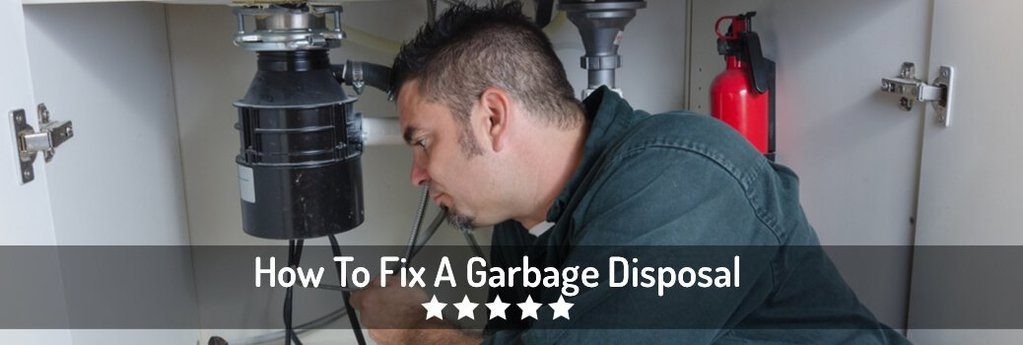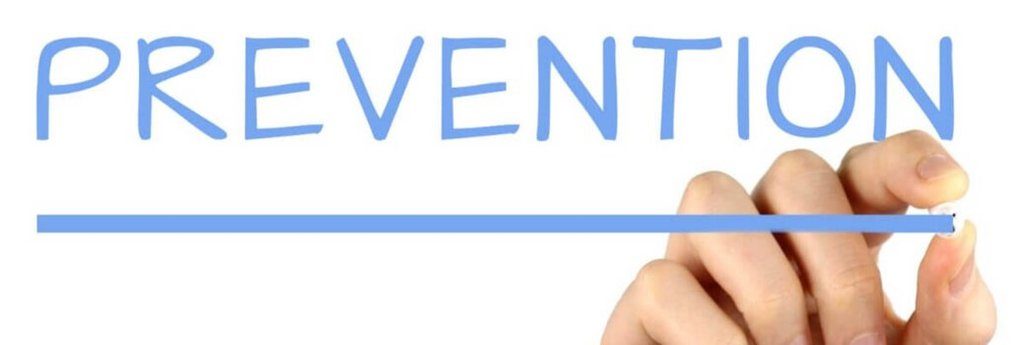
Just like is the case with every other kind of an appliance, all may go wrong with your garbage disposal. If and when these happen, some undesirable consequences are naturally bound to arise. Your kitchen may also be drenched with wastewater and predispose you to sicknesses.
That is why you desperately want to know how to solve these issues if and when they arise. We are here to help you in doing just that. In our two-part discussions, we shall look into the reasons for garbage disposal leaking. Next, we shall examine the various preventive steps to forestall this occurrence.
A. Why Is My Garbage Disposal Leaking?
Generally speaking, a garbage disposal may leak at three main points. These are the top, the sides, and the bottom respectively. The reasons underlying these are varied. Right here, we are going to look into each side and why they would possibly leak. Also, we shall see how to fix a garbage disposal issues briefly.
1. Garbage Disposal Is Leaking From The Top
When your disposal leaks from the top, the likely reason could be your sink flange. You see, your disposal is connected to your sink via a flange or plumber’s putty. With time, these seals do corrode and/or lose strength.
Also, if the disposal is hit hard enough, the seals weaken or develop some cracks. This usually arises when washing dishes vigorously. Regardless of the root causes, the end result of such cracks is an avenue for leaking.
Waste water easily finds its way in between the leaks and soils your kitchen. You definitely want to stop this from happening by all means.
Solution: Tighten the seals
You will definitely want to tighten the seal. Since most garbage disposals are sealed using the plumber’s putty, you will need to deal with it. Use some sharp object to get rid of the remaining putty.
Thereafter, proceed to detach the garbage disposal. Clean it and re-seal using some new putty.In case yours is sealed using the flange, consider tightening and compressing it.
If it is worn out beyond repair, you might have to replace it altogether. This is an exercise which you might have to delegate to an experienced and expert plumber. Any errors might often have adverse repercussions.
2. Garbage Disposal Is Leaking From The Bottom
When the disposal leaks from the bottom, the problem could be brought about by busted seal inside. Just like the putty and the flanges above, these seals also wear out with time.
If and when they completely get dilapidated, they do let in excess water.Further to that, your own actions might also be responsible for their deteriorations. Banging utensils on these seals may reduce the overall lifespan of the seals.
The same case goes for the use of harsh cleaning detergents or chemicals. They eat away the metallic structures due to their corrosive actions.
Solution: Bring in a new garbage disposal
Unfortunately, your options are limited here. You have no choice but to bring in a new garbage disposal unit. Before purchasing a new unit, ascertain whether the one you have may still be eligible for warranty. Here you can find a nice selection of the best garbage disposals on the market.
Definitely, you have to make take advantage of such a warranty as a matter of priority. Fitting new garbage disposal is not a task that anyone might do. You definitely have to possess the right training and experience.
If you lack either, we suggest that you bring in an expert to help you out. This shall save you many problems which might often arise with negligence.
3. Garbage Disposal Is Leaking From The Side
Lastly, the garbage disposal may also leak from the sides. This problem mostly arises whenever there is an issue with your drain lines. Those points on your plumbing where the drain lines interconnect are particularly vulnerable to this menace.
Fortunately, this is not always too much of a problem. Other than that this problem is also likely to arise at that point where the larger pipe meets the smaller pipe. The smaller pipe is the one that channels waste water from your dishwasher to the garbage disposal. The large one, on the other hand, drains out the wastewater from your disposal to the sewer.
Solution: Re-seal or tighten the connections
Fortunately, this problem is never that serious. As such it is something you can comfortably and conveniently do on your own. All you have to do is to re-seal or tighten the connections.
To do so, first find the metal clamp that connects the dishwasher to your garbage disposal. Tighten it using a screwdriver and note its progress as pertains matters leaking. As for the main drain line, replace the rubber gasket first and foremost.
Thereafter, tighten the screws and check whether the connections are now tight enough to prevent any leaks. Yet again, you will make do with a screwdriver.
B. Leaking Garbage Disposal Prevention
Prevention is definitely better than cure. Rather than wait till things get out of hand to act, you would rather prevent them from arising in the first place. In this segment of our discussions, we are going to look into some of the preventive steps you might want to take to avoid such leaks.

1. Check For Leaks From Time To Time
You should adopt a proactive approach while dealing with your garbage disposal. To do this, check for leaks from time to time. This way, it will be possible for you to anticipate the impending occurrence of the problem and make appropriate arrangements to mitigate them.
Use some dry paper towel to feel those areas that are likely to leak. Of course, seal any leaks as soon as you spot one. Waiting too long may enlarge it.
2. Run Cold Water Frequently
Every now and then, you are advised to run some cold water down the drains. This way, you shall be able to ascertain whether there are any grease or fat.
Definitely, the existence of these twin issues has the impact of clogging your drains and preventing the smooth flow of water. To remedy these issues, you might have to use a degreaser.
Alternatively, you might also want to make do with extremely hot water. Then the suction pump also helps to eliminate any clogs. A combination of these three items will surely restore your garbage disposal drainage.
3. Inspect Your Unit Regularly
You should also develop a habit of inspecting your unit regularly. As you do so, be on the lookout for cracks and other issues which might interfere with the smooth flow of wastewater. Remember, some parts of the disposal are hidden from view.
To access them, make use of some bright spotlights. Shine the spotlight to the entire length and breadth of the garbage disposal. As you do so, pour some water and be on the lookout for the slightest leaks. It goes without saying that you have to handle those leaks appropriately and timely.
4. Exercise Some Caution As You Use The Drains
Do exercise some caution as you use the drains. In particular, refrain from putting hard foods or any other objects down the drain. These definitely have the tendency to clogging the drains and preventing the wastewater from flowing smoothly as should be.
Use a sieve to filter out hard debris before channeling the wastewater to the drains. Examples of these include potato peels, rice, pasta, egg shells, and coffee grounds. This way, it will be possible for you to spare your drains of any adverse issues.
5. Stay Away From Using Bleach
Whilst bleach is powerful and toxic, it is not a substance you want to pour down your drains. That is because it is very reactive. If poured in the drains, it can react with other substances in your pipes.
In the course of so doing, it releases fumes and further clogs the system.Instead, use a good kitchen detergent which preferably contains degreasing agents. These will usually break down the grease yet spare your drains from the risks of further clogging.
You should also maintain a great cleaning routine of around once a week.
6. Wash Dishes Gently
Finally, you have to wash your dishes gently also. Remember, we started out by saying that banging the disposal may loosen the nuts, bolts, screws, and the flanges. You do not want to be part of the problem.
Do not always be in so much of a hurry as you wash your dishes. Instead, take your precious time to do the washing slowly and steadily. As you do so, be on the lookout for any severe issue which might endanger your garbage disposal.
It also pays to tighten any loose nuts immediately you spot them.
Conclusion
We believe we have exhausted all you might want to do in the event that your garbage disposal is not draining. The steps we have outlined and explained above will definitely come to your rescue when you happen to get stuck. That is why we ask you not to hesitate to implement them as soon as possible.
Have you found out guidance above insightful? We always love hearing from you people. Feel free to let us know of any other issue as regards our discussions. If you don’t mind, also share this information with others around you.
Best of luck in your subsequent garbage disposal fixing exercise!
Recommended Reading
How To Connect A Dishwasher To Your Garbage Disposal (Drain Hose Connections)
Dishwasher not draining? Here you can learn how to connect your dishwaher drain hose to your garbage disposal in just a few easy steps.
Learn How To Get Rid Of Kitchen Sink Odor. 14 Easy Ways To Eliminate Stinky Smells.
Is your kitchen sink smelly? Let me show you a couple of easy ways to remove that awful smell from your kitchen using just a few ingredients.
Is Composting Better Than Garbage Disposal? Garbage Disposal Versus Compost Bin.
"Is composting better than garbage disposal?" The straight answer to this question is a firm NO! A garbage disposal is by far the better.
What Size Of A Garbage Disposal Do I Need?
Garbage disposals come in diverse shapes and sizes. What size of a garbage disposal do you need? A big one? A small one? What kind of motor? Read on...
How To Use A Garbage Disposal Wrench To Unjam Your Device At Home
The garbage disposal wrench is an item you will find to be very handy when your garbage disposal is jammed or you need to unclog it. This is how you do it.
Can I Have A Garbage Disposal With A Septic Tank?
Garbage disposal is limited only to the kitchen and in shredding food wastes to finer particles.The septic tank handles all of your household wastes.
